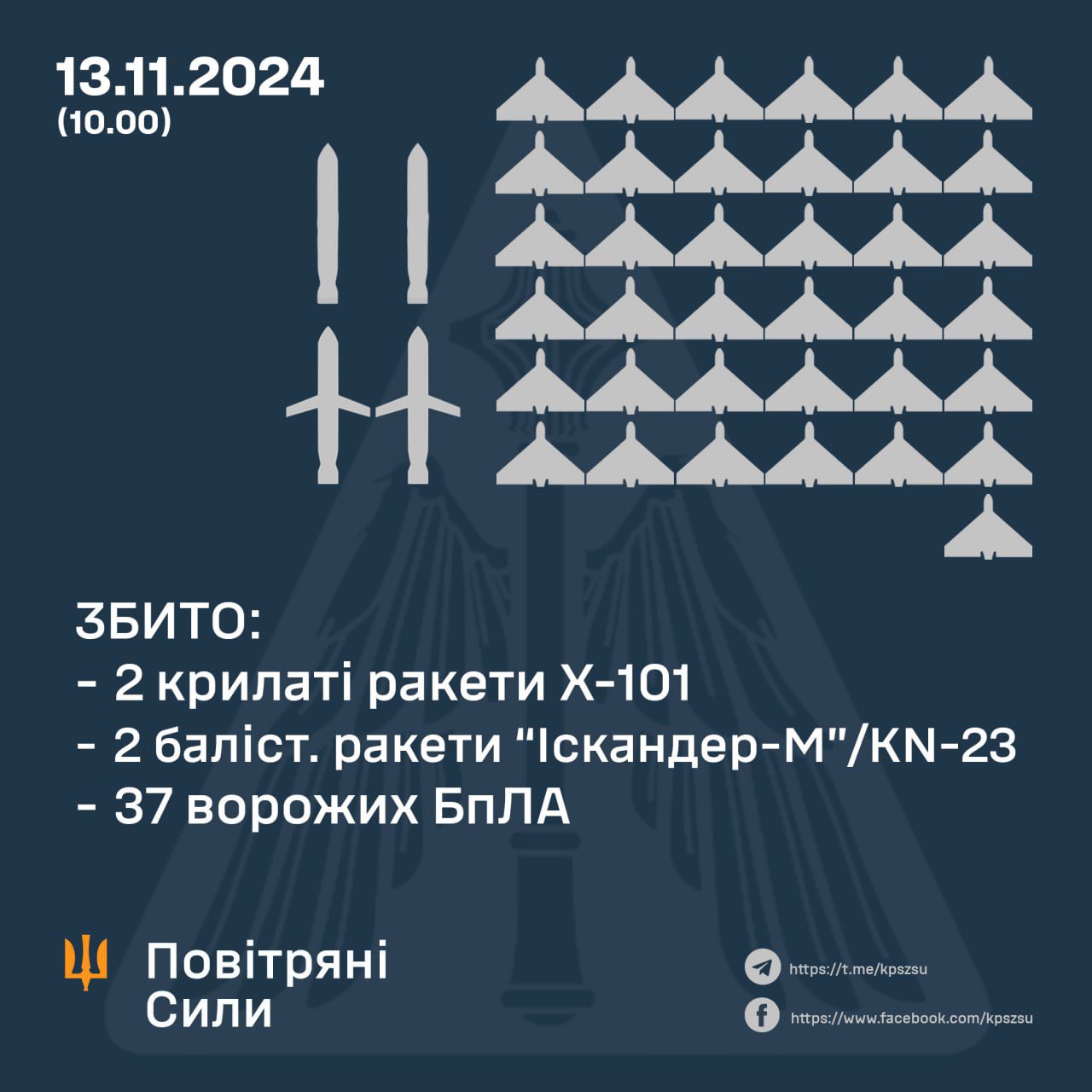Reporting From Ukraine:
https://www.youtube.com/@RFU/videos
Reporting From Ukraine Uncensored Combat Footage (from this and past Reports) is found on Telegram:
https://t.me/RFUEnglish or @RFUEnglish
[ You need to have the Telegram app to view the larger videos. ]
The complete transcript.
—
[ New Record! Ukraine Launches Biggest Strike Yet! ]
—
Today [ Nov 13 ], there is a lot of news from the Russian Federation.
Here, in a daring raid, Ukrainian forces made the biggest drone attack yet against Moscow.
Ukrainians continue to use their latest drone developments to target critical Russian infrastructure, including airfields, oil depots, and military bases. The goal of these is to disrupt Russian offensive operations against both the Ukrainian armed forces and the country’s civilian population.
First of all, Ukrainian drones targeted Russia’s capital, Moscow. According to Russia’s Ministry of Defense, 84 Ukrainian drones were intercepted over 6 regions, with nearly half approaching Moscow and causing flights to be diverted from 3 major airports in the area.
This was the largest attack on the Russian capital since the start of the war and was described as massive by local officials. Footage released by residents, who defied government orders, not only contradicted official claims that no damage occurred, but also showcased the aftermath of the strikes, including the operations and locations of Russian air defense units.
Officials reported that most of the drones were intercepted over the Ramenskoye, Kolomna, and Domodedovo districts. The Russian Ministry of Defense claimed that 34 drones were shot down over the town in total.
Earlier Ukrainian forces struck Russian ammunition warehouses in the Bryansk region, during another large-scale drone attack. The Ukrainian General Staff reported that drone operators of the Unmanned Systems Forces successfully hit warehouses at the Russian military’s 1060th Logistics Center, known for storing missiles of various types, causing initial explosions and secondary detonations at the facility with geolocated imagery showing 2 large fires burning near it.
Bryansk was also targeted 10 days before that when one of the largest microelectronics plants in Russia caught fire after a drone strike.
This plant is located over 100 kilometers north of the border with Ukraine’s northern Sumy region and was attacked at least once before as well. It produces key components used widely in Russian defense production, including Pantsir air defense and Iskander missile systems.
In parallel, Ukrainian forces have maintained a series of strikes on military training camps in Russian border regions, seeking to disrupt Russia’s efforts to train newly mobilized troops. These operations are often executed with high precision, aided by reconnaissance drones for fire correction.
One recent strike targeted a tent encampment at a Russian military training ground in the Rostov region, with geolocated video footage revealing significant damage. Russian military officials reported that the attack took place overnight, catching many soldiers from the 150th Guards Motorized Rifle Division while they were resting in their tents.
Lately, Ukrainian forces have escalated attacks on Russian military positions, both within Ukraine and across the border, frequently focusing on such training grounds to weaken Russian capabilities.
On the night of November 7th, units from Ukraine’s Main Military Intelligence Directorate executed a significant drone strike on an oil refinery in Saratov Oblast, reportedly causing damage to the facility’s infrastructure.
Social media footage captured a fire near the refinery, while a local Telegram channel reported that debris from a downed drone struck a fuel oil tank and a specialized installation. The refinery, a subsidiary of the Russian state oil company Rosneft, is said to produce approximately 7 million tons of oil annually.
A similar attack was conducted on the Aleksin Chemical Plant in Tula Oblast with 13 drones causing a fire, halting the plant’s operations, and eventually causing a chemical explosion. This key factory produces ammunition, gunpowder, and other products for the Russian defense industrial base.
Around the same time, Ukrainian military intelligence drone operators carried out a surprising long-range attack on a Russian naval base in the Dagestani port city of Kaspiysk using their domestically produced A-22 Flying Fox drone.
The base houses Russia’s Caspian Flotilla, along with Russian Marines and Coastal Troops. Reports indicate that the strike damaged at least two vessels - the missile ships Tatarstan and Dagestan - and potentially several smaller Project 21631 ships.
This targeted fleet has been involved in strikes against Ukraine, while the 177th Marine Regiment stationed at the base has seen combat in the Kherson and Zaporizhzhia regions. Despite Russian authorities claiming that all drones were intercepted, social media videos suggest otherwise, showing drones hitting their targets and causing large explosions. The incident occurred approximately 15 kilometers from a local airport, which has since suspended operations indefinitely.
Overall, Ukraine is trying to keep all options open and is ramping up the domestic production of long-range munitions to not only bypass restrictions on the usage of Western-supplied weapons but also to intensify strikes in the deep Russian rear at a crucial moment.
This aims at causing premature culmination during the time the Russian offensive is at its peak which can ultimately lead to stagnation of the enemy’s efforts. The idea is not only to cripple all possible efforts of the Russian army by deranging logistics and targeting training grounds, but to cause long-term negative effects.

